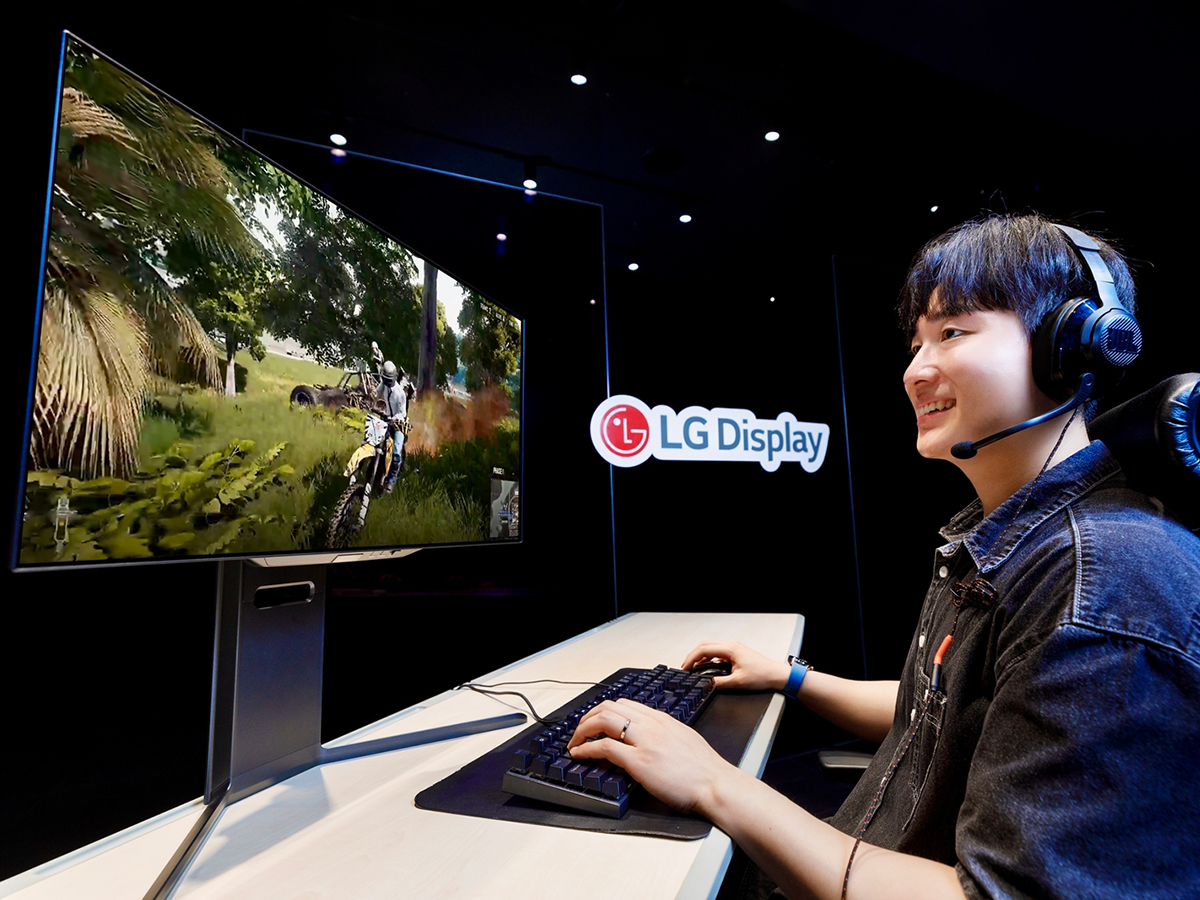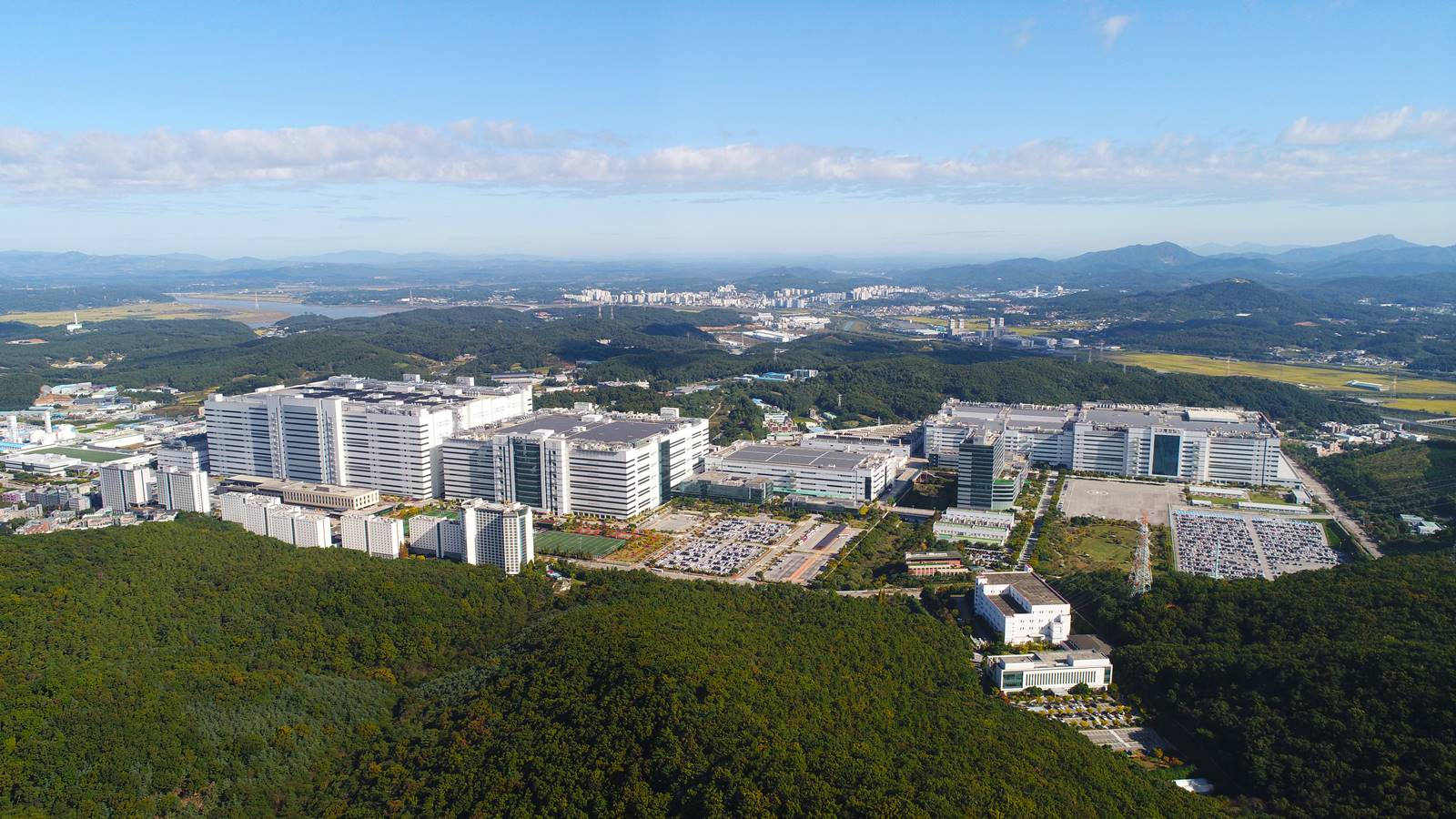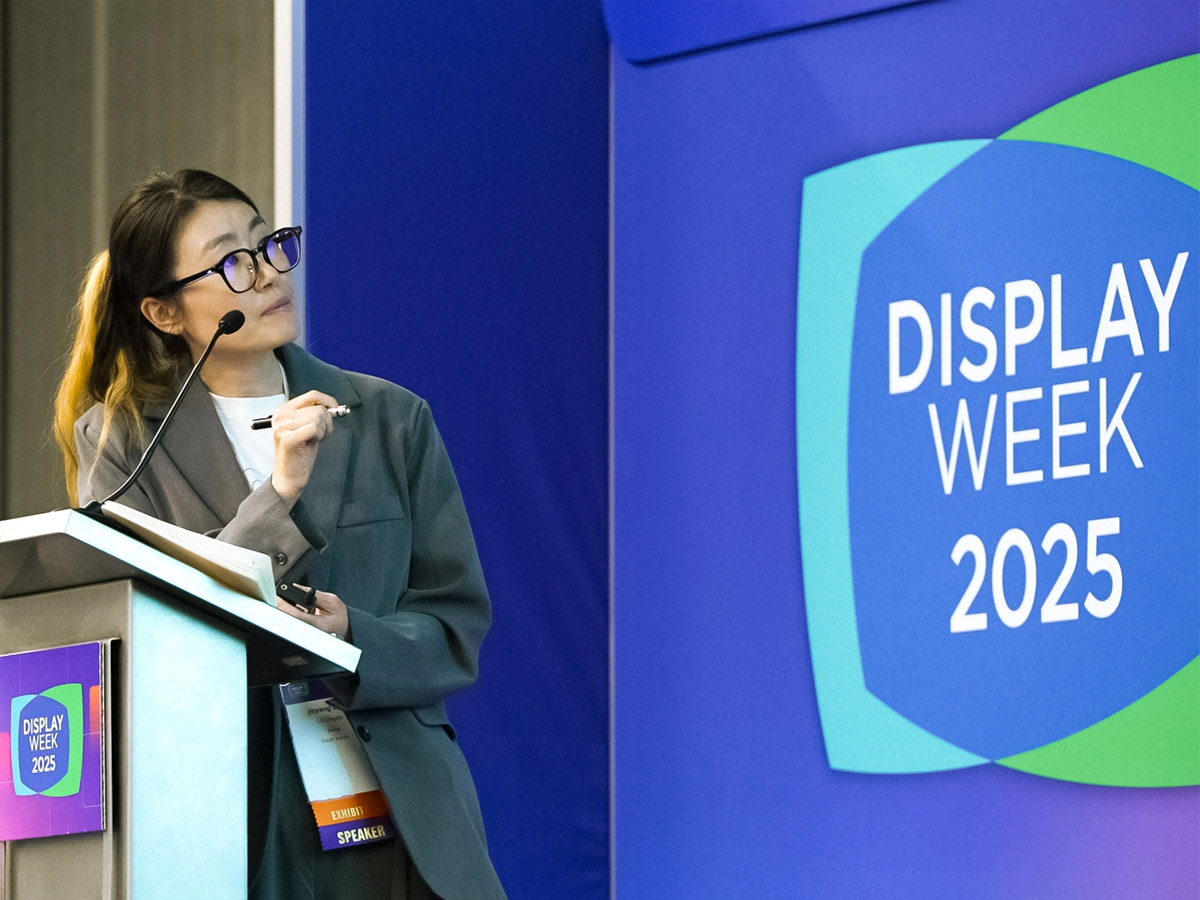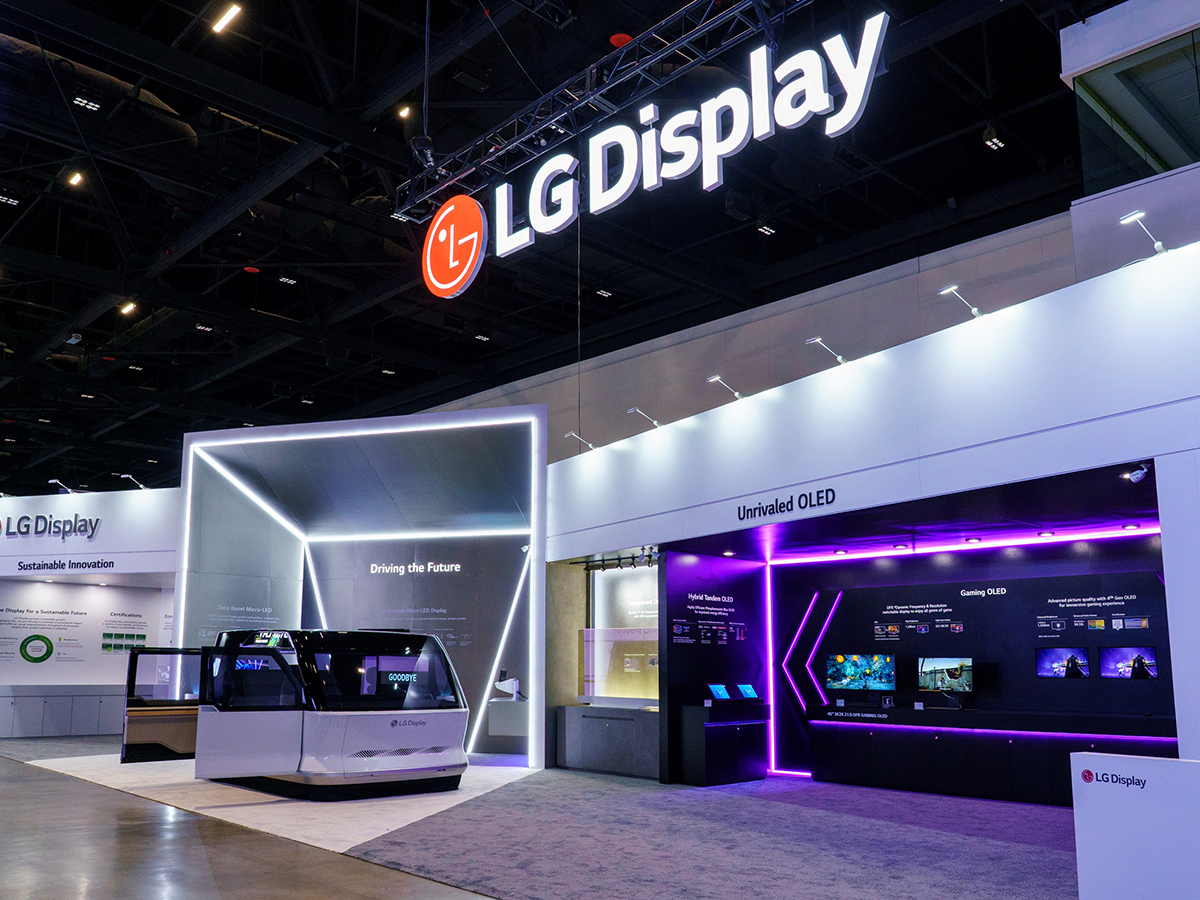Latest News
-
 PR LG Display Begins Mass Production of Ultimate Gaming OLED Panel with 4th-Generation OLED Technology2025-06-27 See details
PR LG Display Begins Mass Production of Ultimate Gaming OLED Panel with 4th-Generation OLED Technology2025-06-27 See detailsSEOUL, Korea (June 27, 2025) – LG Display, the world’s leading innovator of display technologies, announced today that it has successfully begun mass production of the world’s top OLED monitor panel, incorporating its latest proprietary technology as the company accelerates its push into the premium monitor panel market. The 27-inch OLED monitor panel achieves a peak brightness of 1,500 nits thanks to the application of the company’s core fourth-generation OLED technology, Primary RGB Tandem.
In addition, LG Display has successfully developed a 540Hz OLED monitor panel - surpassing the highest refresh rate currently available - and plans to unveil it soon.
As a result, LG Display is leading the world’s OLED technology across the “triple crown” of key elements that determine gaming monitor picture quality - brightness, refresh rate, and response time.
By incorporating its proprietary Primary RGB Tandem technology, LG Display’s 27-inch OLED monitor panel delivers the highest peak brightness among existing OLED monitors - 1,500 nits (based on APL 1.5%) and a refresh rate of 280Hz. This technology is the world’s first to stack the three primary colors of light - red, green, and blue - into four separate, independent layers. By increasing peak brightness, it maximizes contrast ratio, delivering more vivid and accurate visuals.
The panel also achieves a color reproduction rate of 99.5%, the highest among existing OLEDs and a level that is suitable for professional content creation environments such as film production and color grading.
Moreover, it eliminates screen glare, which significantly impacts the gaming experience, blocking 99% of internal and external light reflections through a special film and improved internal panel element structure. As a result, it maintains perfect picture quality without color distortion even under lighting conditions of 500 lux - the brightness of a living room in broad daylight. This has enabled the panel to obtain certifications for Perfect Black, Perfect Color, and 100% Color Fidelity from global organizations such as UL Solutions and Intertek.
LG Display additionally revealed details of its development of the first OLED monitor panel to simultaneously support a 540Hz refresh rate and QHD resolution. A 540Hz refresh rate means the screen refreshes 540 times per second, delivering overwhelming performance in fast-paced games such as first-person shooters (FPS) and racing titles.
Exceeding a 500Hz refresh rate had been considered a virtually unbreakable threshold due to the associated steep drop in picture quality. LG Display has successfully overcome this limitation by developing and applying a new proprietary algorithm. The 540Hz refresh rate goes beyond even the highest standards envisioned by professional gamers for OLED gaming monitors.
Meanwhile, LG Display’s proprietary Dynamic Frequency & Resolution (DFR) technology enables ultra-high refresh rate modes of up to 720Hz in HD resolution. DFR allows users to select their preferred refresh rate mode depending on the content.
The company’s OLED monitor panels also feature an industry-leading response time of 0.03ms, far surpassing the performance of LCD monitors, which have a response time of up to 1.0ms.
Response time refers to how long it takes for a pixel to change from one color to another. Even with a high refresh rate, if the response time is slow, blurred edges or ghosting from previous frames can occur. A fast response time is essential to fully experience the speed of fast-paced games.
LG Display’s OLED panel for monitors combines an ultra-fast 0.03ms response time with a high refresh rate of 540Hz, meeting the highest tier of the relevant Video Electronics Standards Association (VESA) standard - ClearMR (Clear Motion Ratio) 21,000. A higher ClearMR value indicates better picture quality, greater clarity, and reduced motion blur.
With major global set manufacturers having completed launch evaluations, LG Display plans to begin mass production of its 540Hz Gaming OLED panel in the second half of this year.
“OLED monitors are rapidly expanding their market share thanks to perfect black levels and fast response times - capabilities fundamentally unattainable by LCD monitors,” said Hyeon-woo Lee, Head of the Large Display Business Unit at LG Display. “With proprietary technologies like fourth-generation OLED and DFR, which competitors cannot replicate, LG Display will enhance its competitiveness in the premium monitor market and deliver differentiated value to customers.”
LG Display Begins Mass Production of Ultimate Gaming OLED Panel
with 4th-Generation OLED Technology -
 PR Securing a Future Market Lead Through OLED Technology Differentiation2025-06-17 See details
PR Securing a Future Market Lead Through OLED Technology Differentiation2025-06-17 See detailsSEOUL, Korea (June 17, 2025) – LG Display, the world's leading innovator of display technologies, announced today that it plans to make an investment in new OLED technologies at the trillion-KRW level to enhance its technological competitiveness and growth foundation.
The company's board met on June 17 and approved an investment of KRW 1.26 trillion in new OLED technologies to secure a leading position in the display market.
It will focus on infrastructure development, including facilities for applying new OLED technologies. The investment period has been set for approximately two years, from June 17, 2025, to June 30, 2027.
This investment is part of LG Display’s mid- to long-term capital expenditure (CAPEX) plan, and efforts to improve the company’s financial structure will continue independently of it.
LG Display plans to focus its facility investment related to next-generation OLED technologies primarily at its Paju campus. This move aims to proactively respond to growing global demand for OLED in the display market.
The company’s strategy is to focus investment on developing premium products to continuously deliver differentiated customer value and widen the gap with competitors in the growing OLED market. This approach is based on the assessment that demand for high-performance premium OLEDs is increasing as technology evolves.
Through its investment, LG Display will concentrate on next-generation premium OLED panels and building module infrastructure. The investment decision was made after thoroughly verifying and preparing stable technology development, mass production systems, and market demand, aiming to secure both future growth drivers and enhanced profitability.
LG Display’s decision to invest in OLED is expected to have a positive impact on the local economy of Gyeonggi-do, including Paju, where most of the investment will be concentrated. In particular, this is the first domestic investment of its kind since the sale of the company’s Guangzhou LCD factory in China and is expected to contribute to the recovery of the national economy.
It not only involves large-scale direct facility investment but also anticipates indirect economic effects through collaboration with small and medium-sized partner companies. As a result, it is expected to have a positive effect on revitalizing local commercial districts.
“If last year laid the foundation for a turnaround, this year we will do our utmost to make it a year to leap forward,” said Cheoldong Jeong, CEO and President of LG Display. “We will proactively develop differentiated technologies and products unique to LG Display to deliver customer value and lead the market.”
-
 PR LG Display’s 4th-Generation OLED Panel Research Selected as Distinguished Paper at SID Display Week 20252025-05-19 See details
PR LG Display’s 4th-Generation OLED Panel Research Selected as Distinguished Paper at SID Display Week 20252025-05-19 See detailsSEOUL, Korea (May 18, 2025) – LG Display, the world’s leading innovator of display technologies, announced today that its fourth-generation OLED panel research was selected as a Distinguished Paper of the Year by the Society for Information Display (SID), the world’s most prestigious display organization, at SID Display Week 2025.
Each year, SID awards its Distinguished Paper designation to the top 5% of more than 500 papers submitted by global display researchers demonstrating exceptional achievements.
An LG Display research team was selected for a Distinguished Paper award in recognition of their breakthrough achievements in developing fourth-generation OLED panel technology, which significantly improves performance compared to previous OLED generations in terms of brightness, color expression, and energy efficiency.
Fourth-generation OLED is based on LG Display’s proprietary Primary RGB Tandem technology, which stacks the three primary colors of light - Red (R), Green (G), and Blue (B) - in separate, independent layers. This enables fourth-generation OLED to achieve a maximum brightness of 4,000 nits - the highest level in the industry (1 nit equals the brightness of a single candle).
In addition to increased peak brightness, fourth-generation OLED features improved color brightness, which allows enhanced color expression. Its color brightness of 2,100 nits is a 40% improvement over the previous generation. It also maximizes energy efficiency, meeting the increased power consumption demands of AI TVs with approximately 20% greater energy efficiency (based on a 65-inch panel).
The company presented its Distinguished Paper as well as 16 additional research papers on next-generation display technologies at SID Display Week 2025. In particular, it introduced research achievements related to a 480Hz OLED panel that applies its globally unprecedented Dynamic Frequency & Resolution (DFR) technology.
LG Display’s proprietary DFR technology enables users to prioritize between a higher refresh rate or higher resolution depending on the content. Fast-paced games such as first-person shooter or racing titles can be enjoyed smoothly without any stuttering in high refresh rate mode (FHD∙480Hz). Movies or similar content can be experienced with an overwhelming sense of immersion in high resolution mode (UHD∙240Hz).
Meanwhile, the company’s 83-inch fourth-generation OLED TV panel and 57-inch automotive Pillar-to-Pillar (P2P) Oxide LCD won People’s Choice Awards at SID Display Week 2025. These awards recognize outstanding exhibits based on votes from visitors during the exhibition period.
Based on LG Display’s proprietary Primary RGB Tandem technology, the 83-inch fourth-generation OLED TV panel won a People’s Choice Award in the category of “Best OLED Technology.” It perfectly implements AI TV features such as upscaling, converting low-resolution content into exceptionally high picture quality. In addition, the panel’s reflectance was improved from 0.9% to 0.6% compared to the previous generation, enabling perfect black expression in any environment whether dark or bright.
The 57-inch automotive P2P Oxide LCD, which won the People’s Choice Award for “Best Automotive Technology,” is the world’s first 57-inch automotive P2P display based on Oxide LCD technology and is the largest single-panel display of its kind in the world. With such a large screen, a vehicle’s dashboard itself becomes a display, allowing users to conveniently enjoy the advanced infotainment system of a Software-Defined Vehicle (SDV).
“We will continue to strengthen our technological competitiveness in the global market by creating differentiated customer value through ongoing innovation in display technology,” said an LG Display spokesperson.
-
 PR LG Display Targets Future Markets with World-Leading Technology at SID Display Week 20252025-05-14 See details
PR LG Display Targets Future Markets with World-Leading Technology at SID Display Week 20252025-05-14 See detailsSEOUL, Korea (May 13, 2025) – LG Display, the world’s leading innovator of display technologies, is demonstrating its OLED technology leadership at the world's largest display exhibition. Under the theme, “Display Technologies Shaping the Future,” the company has unveiled its full OLED lineup - covering large, medium, and automotive displays - at SID Display Week 2025 in San Jose, California.
The three-day event from May 13 (local time) is gathering global display companies and researchers to present research papers on new technologies and showcase mid- to long-term future technologies alongside new products.
LG Display has divided its exhibition space into three zones, demonstrating the evolution of large-sized OLED technology, automotive display solutions targeting future mobility, and next-generation display technologies for a sustainable future.
In the Large OLED Zone, under the theme “Unrivaled OLED,” LG Display is presenting the excellence of its fourth-generation OLED technology through TV and gaming panels.
Fourth-generation OLED panels apply LG Display's proprietary Primary RGB Tandem structure, which independently stacks RGB (Red, Green, Blue) elements to emit light. This enables a maximum luminance of 4,000 nits, the highest in the industry (with 1 nit being the brightness of a single candle). They feature a special film to express natural colors and brightness in any environment, achieving vivid colors and perfect blacks even in bright indoor spaces, as if watching in a dark movie theater.
LG Display plans to accelerate its efforts to target premium markets with its fourth-generation OLED panels, such as AI TVs and Gaming OLEDs.
The fourth-generation OLED TV panel unveiled at SID Display Week 2025 perfectly implements AI TV features, such as upscaling that converts low-resolution content into overwhelmingly high picture quality. It also boosts energy efficiency by approximately 20% compared to the previous generation (based on a 65-inch panel), through enhancements in the element structure and power supply system.
Moreover, LG Display is exhibiting a comparison between third-generation and fourth-generation OLED technologies by showcasing the different generations of 27-inch Gaming OLEDs side by side. The fourth-generation Gaming OLED panel allows visitors to witness brightness and color gamut improvements while experiencing the evolution between the technologies.
The company is additionally presenting its 45-inch 5K2K Gaming OLED, which provides the ultimate gaming experience with the world’s highest resolution (5120×2160). It features approximately 11 million pixels densely arranged to deliver outstanding picture quality, as well as a 21:9 aspect ratio similar to a movie theater screen, offering an entirely new level of gaming immersion.
LG Display is drawing further attention to its proprietary Dynamic Frequency & Resolution (DFR) technology, which enables the optimization of various game genres on a single monitor. Depending on the content, DFR allows users to freely choose between high refresh rate and high resolution modes. By selecting high refresh rate mode, they can smoothly enjoy fast-paced games like first-person shooters or racing games without any stuttering, while high resolution mode enhances the vividness of games featuring high-quality graphics.
In addition, the company is demonstrating its blue phosphorescent OLED technology for the first time, showcasing a blue phosphorescent OLED panel for IT devices such as smartphones and tablets. With significantly greater luminous efficiency than all OLED generations to date, blue phosphorescent OLED is the result of LG Display’s implementation of a newly developed hybrid two-stack Tandem OLED structure.
By featuring blue phosphorescence in the upper stack of this structure, the IT panel exhibited at SID Display Week 2025 consumes about 15% less power than existing OLED panels. With LG Display becoming the first company to succeed in reaching the commercialization stage of blue phosphorescent OLED panels, the next generation of OLED panels is in sight.
The Automotive Display Zone, under the theme “Driving the Future,” presents future-oriented solutions such as a Stretchable display and a concept car equipped with a full, unique lineup of automotive display technologies, including P-OLED, Advanced Thin OLED (ATO), and high-end LTPS LCD.
The Stretchable automotive display, which can freely expand, has been applied to the center fascia area where physical buttons would traditionally be located, opening up possibilities for innovation in future mobility design.
The concept car features an automotive display optimized for Software-Defined Vehicles (SDVs). An ultra-large Pillar-to-Pillar (P2P) display, which LG Display was the first in the industry to commercialize, spans across the dashboard, while an 18-inch Slidable OLED is installed for Rear Seat Entertainment (RSE).
The 57-inch automotive P2P, the largest in the world as a single panel, allows users to conveniently enjoy the advanced infotainment system of an SDV. The 18-inch Slidable OLED is usually rolled up and hidden inside the ceiling, but when needed, it unfolds to show movies on a large screen or allow users to play games on the move. Both panels have secured reliability and durability to operate normally in extreme environments, from freezing cold as low as -40°C to the extreme heat of +85°C, making them suitable for automotive use.
Additionally, under the theme “Sustainable Innovation,” LG Display has unveiled next-generation displays featuring low power consumption technology and eco-friendly components.
Its 16-inch Neo:LED panel for laptops achieves the highest level of color reproduction, suitable for professionals in fields such as photography and video production, while being energy efficient through the development and application of new LED technology. This makes it an ideal product for IT devices where battery efficiency is especially important.
LG Display is also exhibiting a 14-inch laptop panel with 41% of its weight made up of eco-friendly materials. With the goal of environmental conservation, the company aims to increase its use of eco-friendly materials in this product to 50% by 2030.
"We will continue to create differentiated customer value in the future display market and further strengthen our technological leadership," said Soo-young Yoon, CTO and Executive Vice President of LG Display.
Elsewhere at SID Display Week 2025, LG Display is presenting 16 early-stage research papers on next-generation display technologies, including research achievements in the development of fourth-generation OLED.
-
 PR LG Display’s Senior Vice President Byeong-koo Kim Appointed as Fellow of SID, World’s Most Prestigious Display Society2025-05-07 See details
PR LG Display’s Senior Vice President Byeong-koo Kim Appointed as Fellow of SID, World’s Most Prestigious Display Society2025-05-07 See detailsSEOUL, Korea (May 7, 2025) – Byeong-koo Kim, Senior Vice President and Head of the Medium Display Business Unit at LG Display, has been appointed as a Fellow of the Society for Information Display (SID), the world’s most prestigious display society.
Each year, SID selects only the top 0.1% of its members with outstanding research achievements as Fellows, based on recommendations from previously appointed Fellows and a rigorous committee review. Once appointed, SID Fellows hold their title for life.
Regarding the background of Mr. Kim’s selection as a Fellow, SID stated, “He was the first in the world to commercialize P-OLED for automotive displays using a Tandem structure, and he made significant contributions to the advancement of display technology by developing and popularizing high-performance IT displays such as foldables and In-Cell Touch.”
Mr. Kim has been involved in the display industry for the past 30 years, contributing to the development of new products and foundational technologies. He has been recognized recently for taking the lead in opening up the electric and premium automotive display markets through the development of Automotive P-OLED.
Most representatively, he developed automotive displays by applying a Tandem OLED structure with two layers of organic light-emitting materials to P-OLED. This not only boasts excellent durability with high luminance and long lifespan, but also enables design differentiation due to its use of a flexible plastic substrate.
Prior to this, Mr. Kim developed ultra-high-resolution LCD products with embedded touch sensors within their displays to achieve highly sensitive In-Cell Touch functionality. He also contributed to the commercialization of high-performance IT displays by expanding foldable technology, previously only applied to smartphones, to displays larger than 13 inches for the first time in the world.
Meanwhile, LG Display is focusing on commercializing differentiated advanced technologies by applying them in product development and manufacturing. In addition, the company’s strategy is to accelerate innovation in AI and digital transformation (DX) to lead the way in display technology leadership.